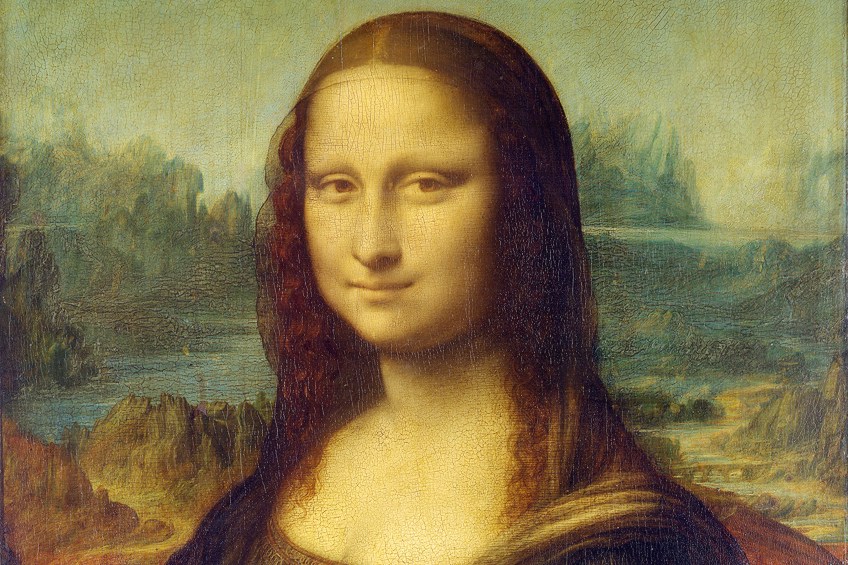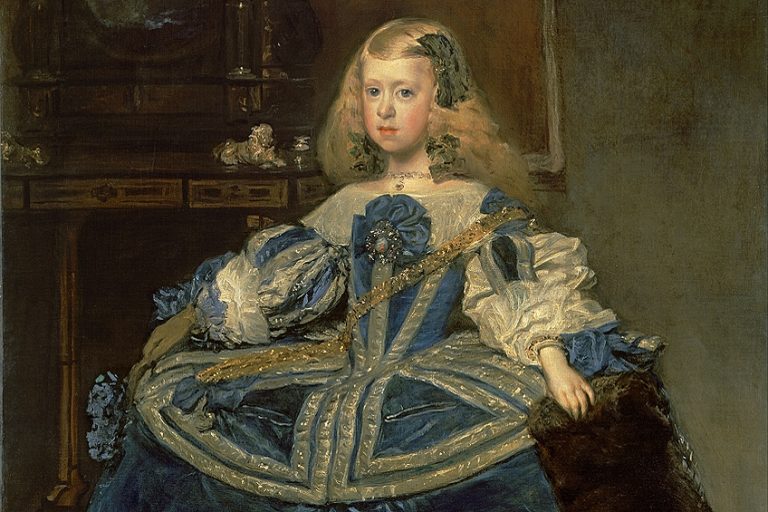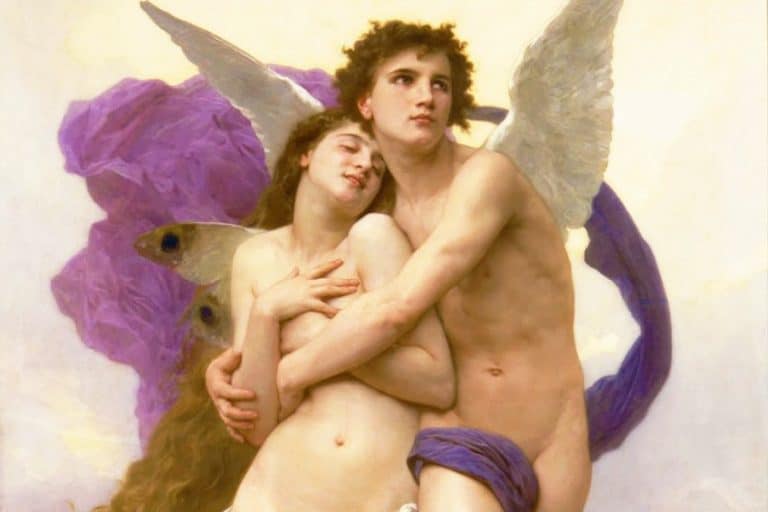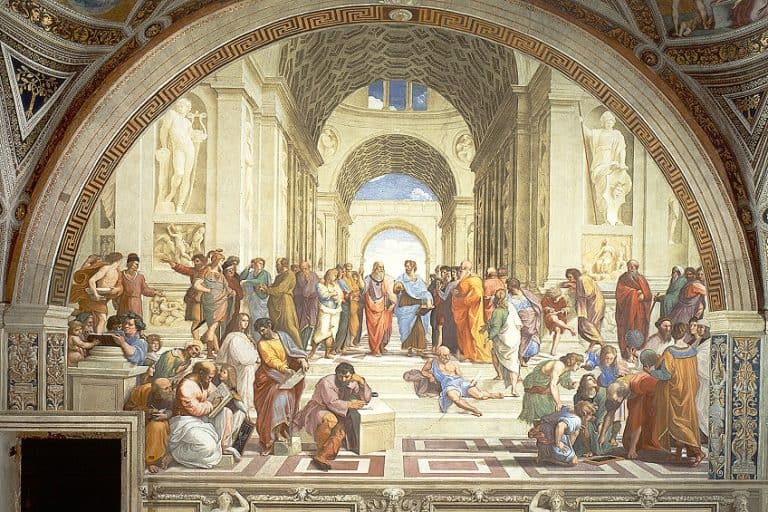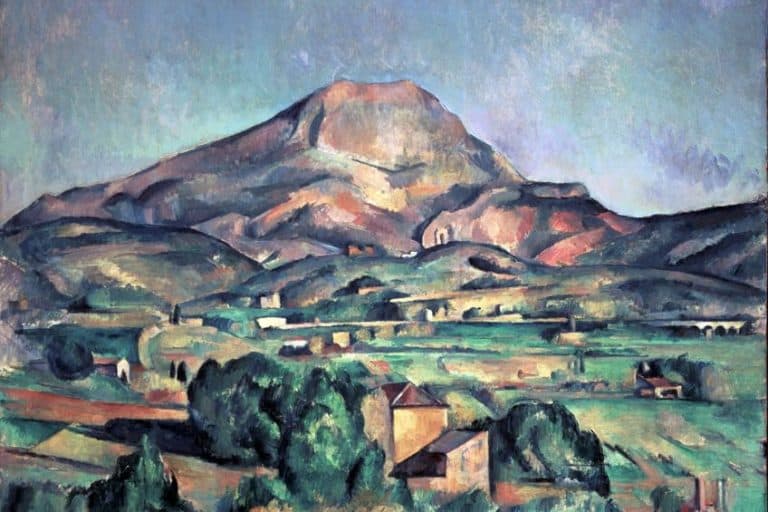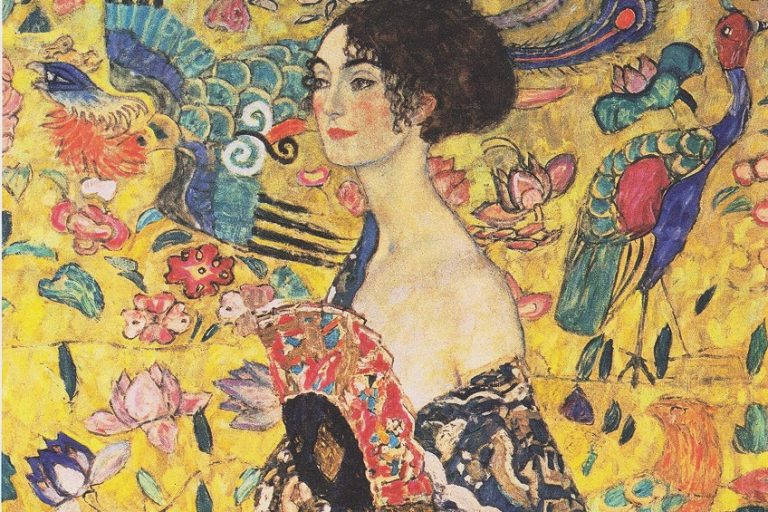“Mona Lisa” by Leonardo da Vinci – Facts About the “Mona Lisa”
The Mona Lisa (c. 1503-1506) by Leonardo da Vinci seemingly needs no introduction as almost all the world is well acquainted with this mysterious beauty and Renaissance masterpiece. This is the painting we will explore in the article below.
Artist Abstract: Who Was Leonardo da Vinci?
Leonardo da Vinci was an Italian painter from the High Renaissance, he was believed to be born in the town called Vinci, or possibly near it. His date of birth was April 15, 1452, and he was believed to have died of a stroke on May 2, 1519 at the Château du Clos-Lucé in Amboise in France.
Da Vinci was known as a genius and polymath; he was an artist, scientist, engineer, draughtsman, architect, and sculptor, among many other skills and talents.
He trained under the Italian Andrea del Verrocchio in Florence. He was commissioned by notable figures like Matthias Corvinus the King of Hungary and Francis I the King of France. He also worked as a military engineer for Cesare Borgia, who was Pope Alexander VI’s son. Some of his famous paintings include The Virgin of the Rocks (c. 1483-1486), The Last Supper (c. 1498), and, of course, the famous Mona Lisa (c. 1503-1506).

Mona Lisa (c. 1503 – 1517) by Leonardo da Vinci in Context
We will start with a contextual analysis, uncovering interesting facts about the Mona Lisa and answering the often-asked questions like: “Who was Mona Lisa?”, “Why is the Mona Lisa so famous?”, “Where is the Mona Lisa painting?”, “When was the Mona Lisa painted?”, and “How much is the Mona Lisa worth?” We will then discuss a formal analysis, providing a visual description of the Mona Lisa painting as well as the artistic techniques Leonardo da Vinci utilized that made this painting so enchanting to look at.
| Artist | Leonardo da Vinci |
| Date Painted | c. 1503 – 1517 |
| Medium | Oil on poplar panel |
| Genre | Portrait painting |
| Period / Movement | High Renaissance |
| Dimensions (cm) | 77 x 53 |
| Series / Versions | N/A |
| Where Is It Housed? | The Louvre Museum (Musée du Louvre), Paris, France |
| What It Is Worth | It holds one of the highest insurance values and is estimated to be worth over $800 million in insurance value. |
Contextual Analysis: A Brief Socio-Historical Overview
The widely held consensus on who commissioned the painting Mona Lisa by Leonardo da Vinci is Francesco del Giocondo; he was reportedly a silk merchant, and his wife was Lisa del Giocondo (her maiden name was Gherardini), who was the subject for the Mona Lisa. The term “mona” originates from the Italian word Monna, which is utilized as a manner of address.
The famous portrait painting is also titled the Italian “La Gioconda” and the French “La Joconde”, which translates to “jocund” or “jovial”.

Significant information about the Mona Lisa painting, and regarding the question, “Where is the Mona Lisa?” as well as the woman’s identity originates from the Italian writer and historian Giorgio Vasari and his seminal text The Lives of the Most Excellent Painters, Sculptors and Architects (1550).
Vasari is often quoted as writing, “Leonardo undertook to execute, for Francesco del Giocondo, the portrait of Mona Lisa for his wife, and after he had lingered over it for four years, he left it unfinished; and the work is today in the possession of King Francis of France, at Fontainebleau”.
However, many scholars who have researched Leonardo da Vinci’s life and the “Mona Lisa” painting have disputed the accuracy of Vasari’s account due to his potential lack of information and prior knowledge of Da Vinci’s circumstances at the time he wrote about it.
Furthermore, because the version of the Mona Lisa in the Louvre Museum is reportedly “finished” questions arise about why Vasari mentioned that it was unfinished and whether he was referring to a possible other copy of the Mona Lisa.
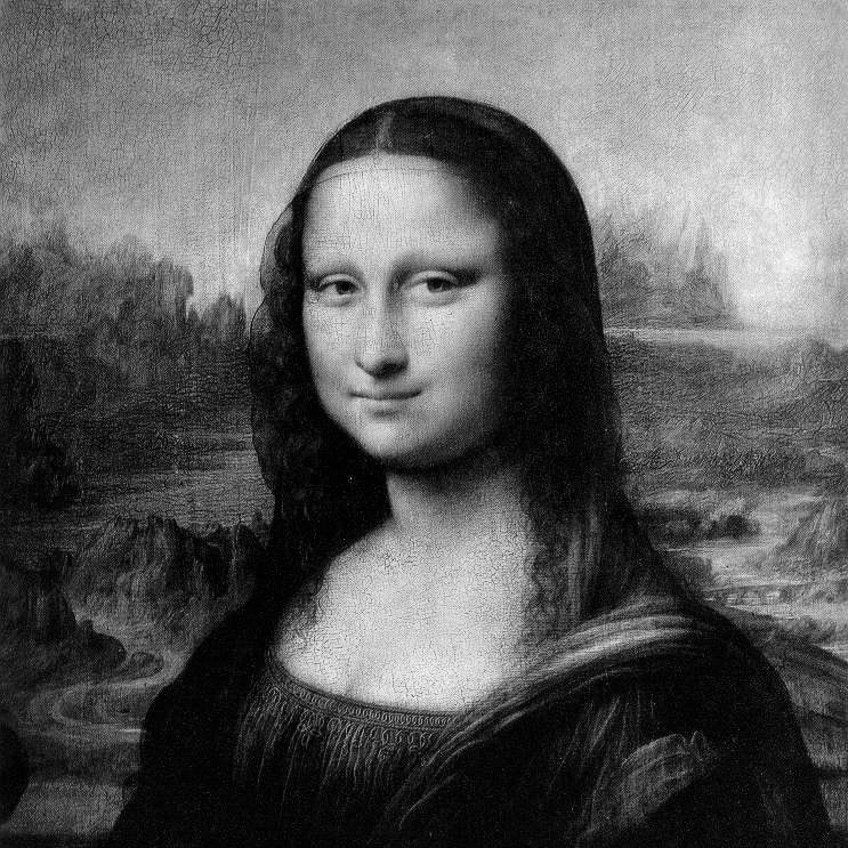
Other discovered sources have verified that Leonardo da Vinci worked on a painting of Lisa del Giocondo. Evidence was found in what is known as the “Heidelberg Document”, found by Dr. Armin Schlechter while he was cataloging the documents. He saw a note, which was dated October 1503 and written by Agostino Vespucci, who was a Florentine clerk and chancellor, on a 1477 copy from one of the letters of the Roman philosopher Marcus Tullius Cicero.
On that note, Vespucci wrote about Leonardo da Vinci’s project of painting Lisa del Giocondo. He also compared Da Vinci’s work to Apelles of Kos, who was an ancient Greek painter.

However, apparently, the Mona Lisa painting was never given to the commissioner, Francesco del Giocondo, and Da Vinci kept it with him until he died, possibly also adding the finishing touches to it. Reportedly, when he moved to France in 1516 to live and work at the Château du Clos-Lucé in Amboise, he also worked on the painting and left it to his apprentice known as Salaì. There is wide scholarly debate around the notion that there was more than one copy of the Mona Lisa, which makes the question we raised earlier, “Where is the Mona Lisa?”, more complex.
Notably, the copy at the Prado Museum is thought to have been painted by Da Vinci’s apprentice Salaì, and possibly copied while Leonardo da Vinci was working on his original copy.
Furthermore, when the Prado copy was cleaned it also provided more visual information in terms of the colors utilized as it did not have the yellow layer that the Louvre’s Mona Lisa has. Additionally, the composition also depicts two columns on either side of the Mona Lisa, which are not in full view in the Louvre’s painting.
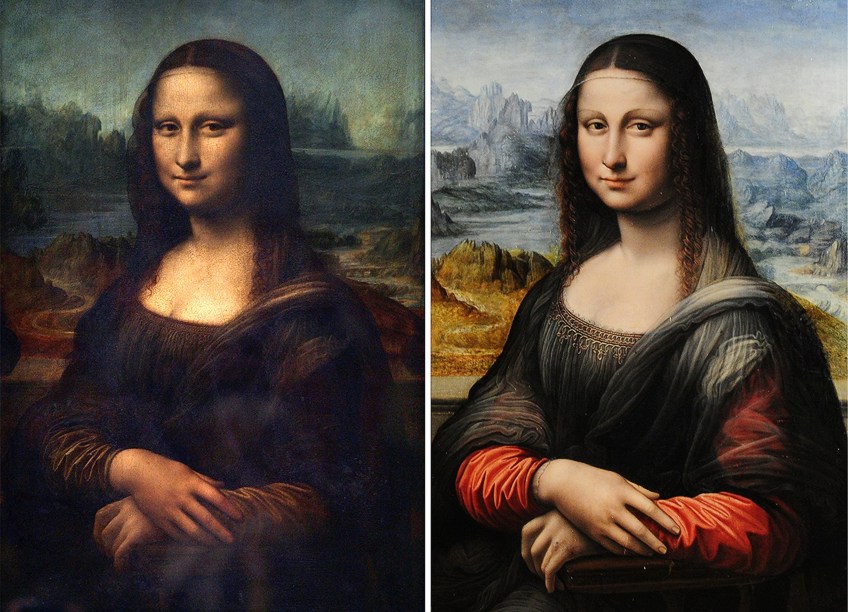
A New Take on Portrait Paintings
Leonardo da Vinci, who painted the Mona Lisa, depicted the half-length portrait in a new way compared to the common profile (side) formats of portrait paintings. Here we see the sitter almost completely facing us, the viewers.
This more frontal format was also believed to influence numerous other artists after the “Mona Lisa” painting.
It was also believed that Leonardo da Vinci took inspiration from the Northern Renaissance painters who painted portraits in a similar manner to that of the Mona Lisa. A notable example that has been pointed out includes Portrait of a Young Man at Prayer (c. 1485-1494) by Hans Hemling.
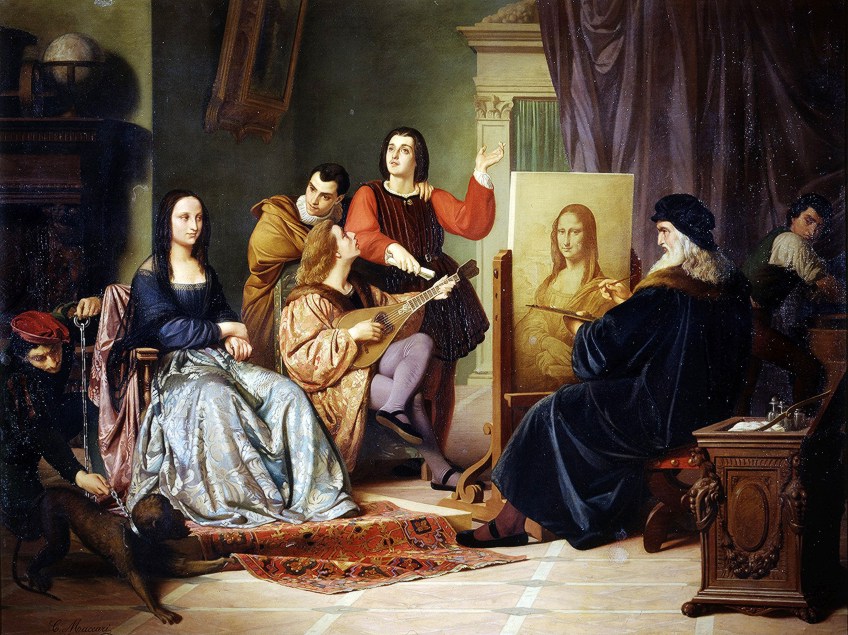
Interesting Facts About the Mona Lisa
It is also interesting to note that the Mona Lisa has been stolen and vandalized on several occasions. In 1911, she was stolen by the Italian Vincenzo Peruggia, who worked at the Louvre and wanted to return it to its rightful place in Italy.
He had the painting for around two years until it was discovered after he wanted to sell it to the Uffizi Gallery director who alerted the police.
In 1956, Hugo Unjaga Villegas, who was from Bolivia, threw a rock/stone at the Mona Lisa painting. Reportedly he was quoted as stating that he had a stone in his pocket and had the idea to throw it at the painting.
The “Mona Lisa” painting was again the victim of a woman, Tomoko Yonezu, at the Tokyo National Museum, who sprayed red paint protesting the museum’s policies regarding access for disabled people.
On another occasion in 2009 at the Louvre Museum, a Russian woman broke a teacup against the Mona Lisa painting out of anger for not being granted French citizenship. Recently, in May of this year (2022), a man dressed in a wig, a woman’s outfit, and in a wheelchair, threw a piece of cake at the beloved painting of Lisa del Giocondo, the Mona Lisa.
His actions were reportedly motivated to bring attention to climate change, exclaiming to everyone there, “Think of the Earth! There are people who are destroying the Earth! Think about it. Artists tell you: think of the Earth. That’s why I did this.”
On all the occasions the “Mona Lisa” was vandalized, the painting itself was not badly damaged, and it was mostly protected by the glass casing that surrounded it.
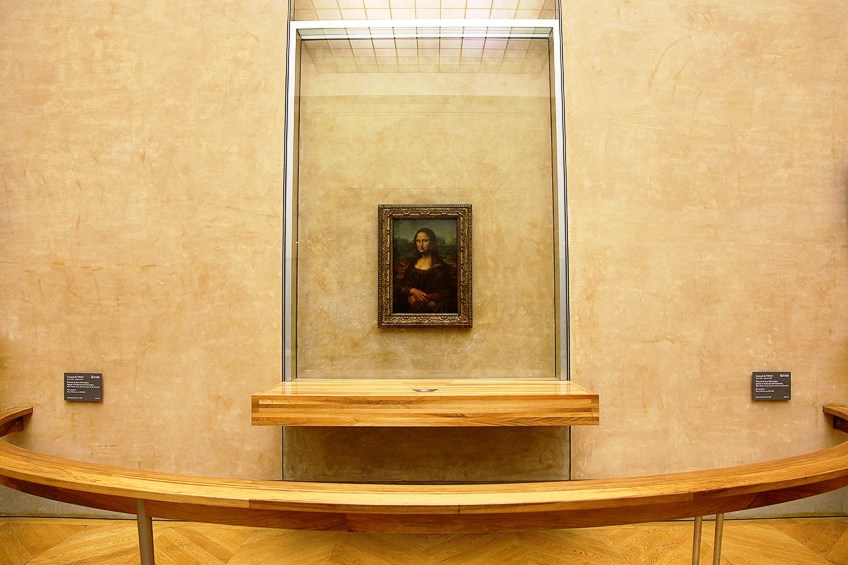
The Mona Lisa in Pop Culture
The Mona Lisa has become more than a painting, it has become a centerpiece in the art world. From starting as an icon of portraiture during the Renaissance era to the burgeoning overstimulation of imagery and information in the 21st century, the Mona Lisa become an icon of pop culture, oftentimes as parody and satire.
Dada artists like Marcel Duchamp produced L.H.O.O.Q (1919), which is a postcard depicting the Mona Lisa with a mustache and goatee drawn on her face. The letters “L.H.O.O.Q” are written underneath with various scribbles on the postcard. Reportedly, Duchamp was playing on the ideas of gender reversal.
This was also known as one of his “ready-mades”, which were ordinary and everyday objects that were referred to as art.
Then, before 1919, the French artist Arthur Sapeck (his original name was Eugène Bataille) created Le Rire (The Laugh) (1883), which featured the Mona Lisa with a pipe in her mouth. The Pop artist Andy Warhol also re-created his own depiction of the Mona Lisa in his painting titled Colored Mona Lisa (1963), which depicts several iterations or duplications of the portrait on one canvas in different colors, namely, pink, yellow, black, and blue in his characteristic silk-screen prints.
This was not Warhol’s only rendition of the Mona Lisa by Leonardo da Vinci. He also created the Mona Lisa (1963), which depicts four images of her in two different formats, made from acrylic and silkscreen on one canvas.
From oil paint to ink, the “Mona Lisa” has also been reproduced by the contemporary artist Lennie Mace, who drew her with a ballpoint pen, titled “Mona a’la Mace” (1993). This has been referred to as a “PENting”.
Beyond modern and contemporary art, the Mona Lisa has also been featured in films and on book covers. References to the Mona Lisa include films like Horton Hears a Who (2008), Elf (2003), Mona Lisa Smile (2003), and The Mona Lisa Identity (2019), and we will find her on the book cover of Dan Brown’s The Da Vinci Code (2003).
Formal Analysis: A Brief Compositional Overview
In the formal analysis below, we will take a closer look at the Mona Lisa painting, providing a visual description, and the notable techniques utilized by Leonardo da Vinci. We will outline these in terms of the primary art elements like color, texture, line, shape, form, and space.
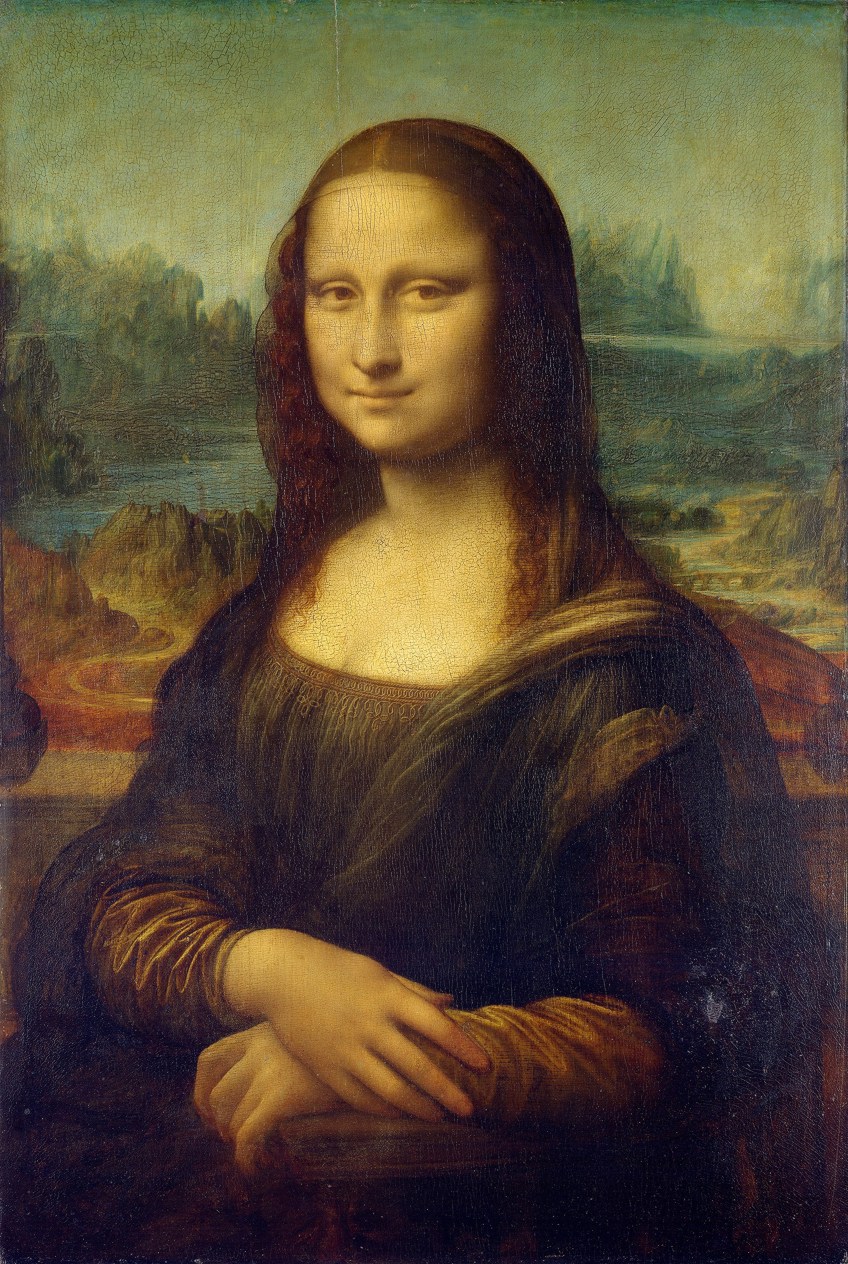
Visual Description: Subject Matter
The Mona Lisa by Leonardo da Vinci depicts a portrait of a woman sitting in an armchair (the armchair is known as a “pozzetto” chair); her body is mostly turned facing us, the viewers. Her left arm (on our right) rests on the left side of the armchair while her right hand is gently placed over her left hand.
This gives her the appearance of slightly leaning to her left as she sits comfortably, yet upright.
The Mona Lisa is dressed in soft silky garments gathered around her body and there appears to be a garment over her left shoulder, which is possibly a scarf. Her bodice is pleated with a golden embroidered trimming, which also reveals her upper neck and chest area.
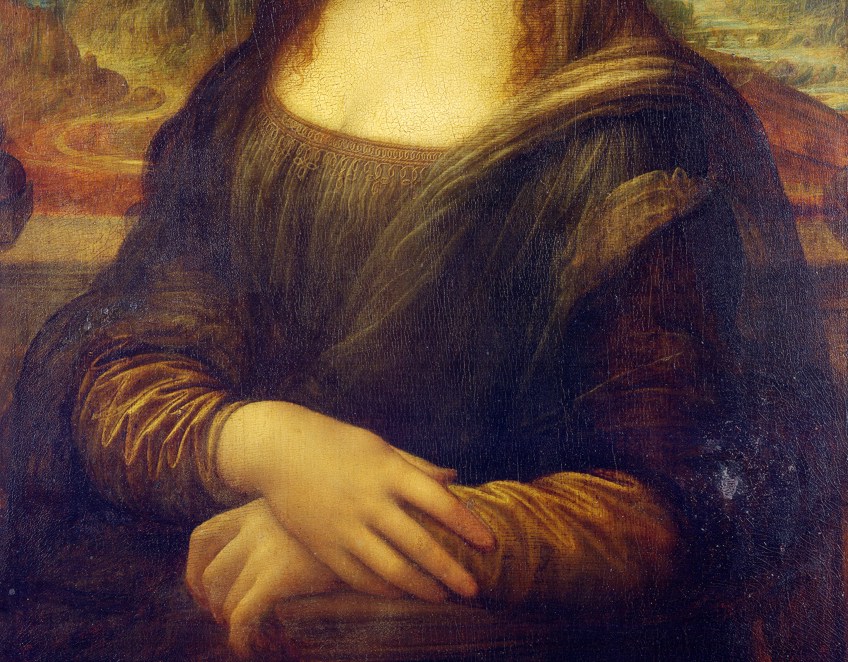
The Mona Lisa’s hair is loose and hangs to just below her shoulders, slightly visible on both sides of her revealed upper chest area. There is a fine dark veil over her head that appears to hang down the length of her hair. She is also not wearing any jewelry.
Behind the seated figure of the “Mona Lisa” is an extensive landscape, the closest appears to be a dry area of land with a winding road to the left that leads to a large body of water further into the distance.
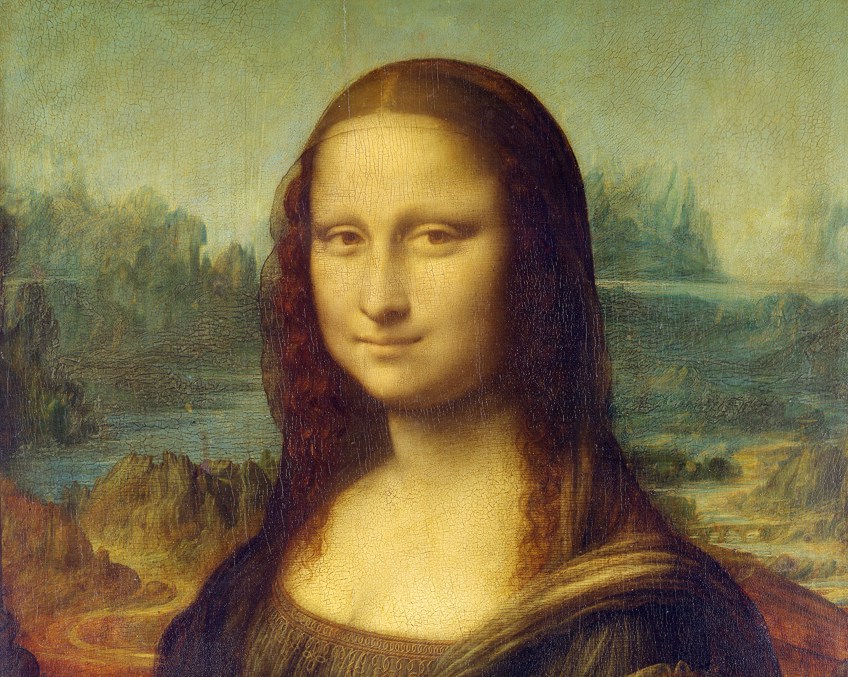
To the right, in the distance below, is a bridge with what appears to be another winding way that leads to the body of water in the distance that seems to lead to an ocean further ahead. Surrounding this landscape are jagged mountainous protrusions.
The landscape behind the Mona Lisa has been a topic of wide debate.
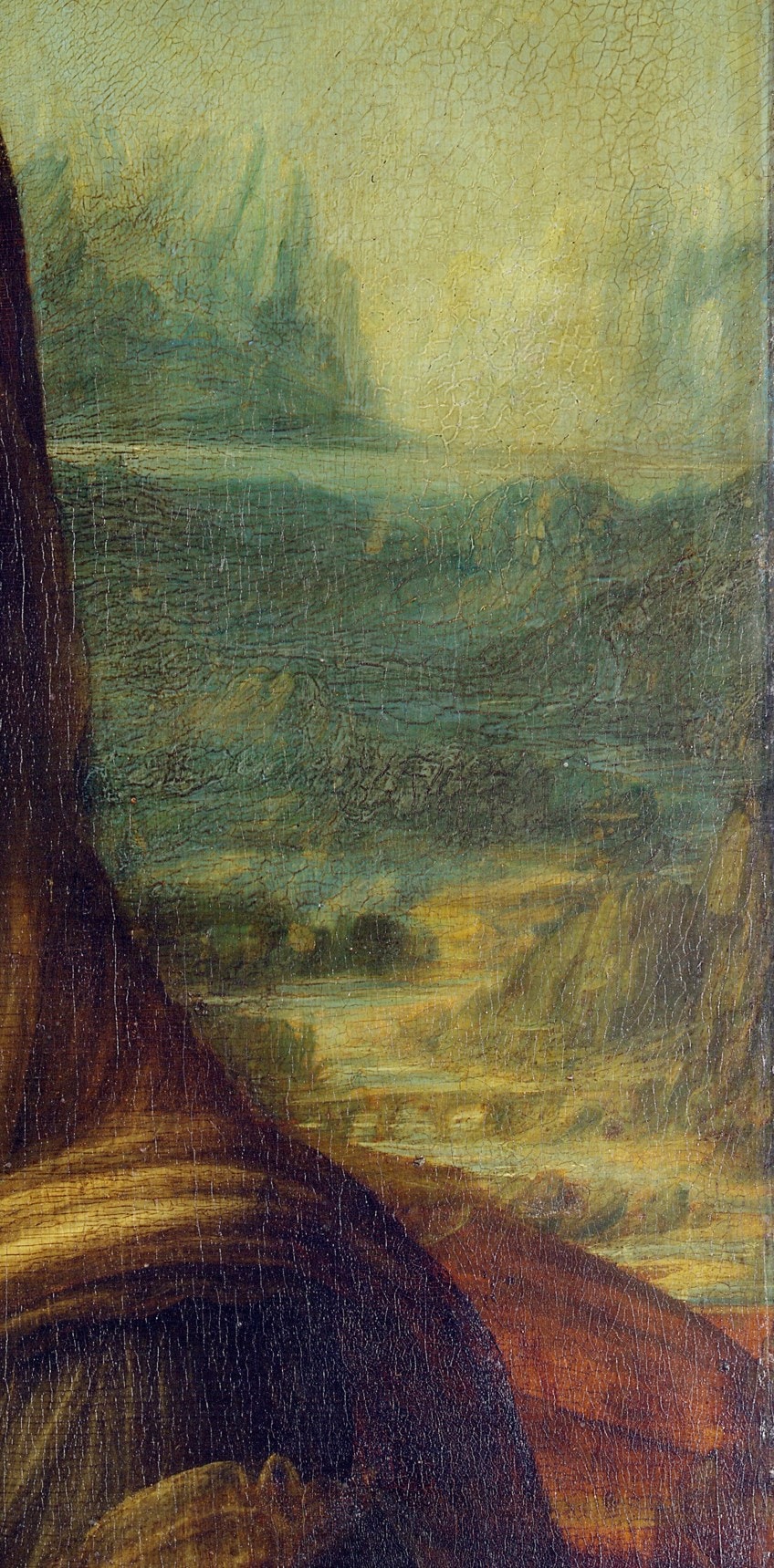
Some believe it is an imaginary setting by Leonardo da Vinci or a backdrop that the artist utilized for the sitting, while others have estimated that it is in fact based on a real scene from the Italian countryside. Furthermore, Lisa del Giocondo, who was Mona Lisa, appears to be sitting on a balcony or porch, otherwise referred to as a loggia in Italian.
This is evident by the long vertical structure behind her as well as indications of pillars on either side of her.

Color
The Mona Lisa painting has faded in color over the years due to natural discoloration of the oil paint, which has left it in yellowed and brown hues. Conservation efforts like varnishing have also stripped some of its layers of colors.
However, some of the colors in the “Mona Lisa” painting would have included greens, blues, reds, and skin-tone, or flesh, colors.
Texture
If we look at the tactile texture of the Mona Lisa painting, the oil paint creates a smooth texture over the composition. There are also implied textures, for example, the fabrics from the Mona Lisa’s clothing like the soft and translucent texture in her veil over her hair and the silky folds from her dress sleeves, the soft curls from her hair, and the smooth and fairness of her skin.
The landscape behind her creates a contrasting effect due to the implied roughness of the rocky mountain terrain.

Leonardo da Vinci applied the sfumato technique, which we will notice in many of his artworks. The word sfumato originates from Italian, which means “vague” or “soft”, and it consists of the subtle “blending” of tones or shades so that they naturally transition. We see this subtle “gradation” or transition of light and dark, as some sources describe it, in Mona Lisa’s mouth and its corners as well as the corners of her eyes.
This gives a more naturalistic effect to the composition and the subject matter, which also eliminates obvious outlines.

Line
Because the Mona Lisa painting is a portrait, the orientation is vertical, which gives it implied vertical linearity. However, the landscape behind her emphasizes horizontal lines created by the waterscape. Additionally, there is also a horizontal line created behind the Mona Lisa from the balcony.
Furthermore, there are curved lines created by the winding pathway in the distance, which creates a subtle contrasting effect with the main subject sitting in the foreground, who also has various curved lines created by the fabric folds as well as her overall voluptuousness.
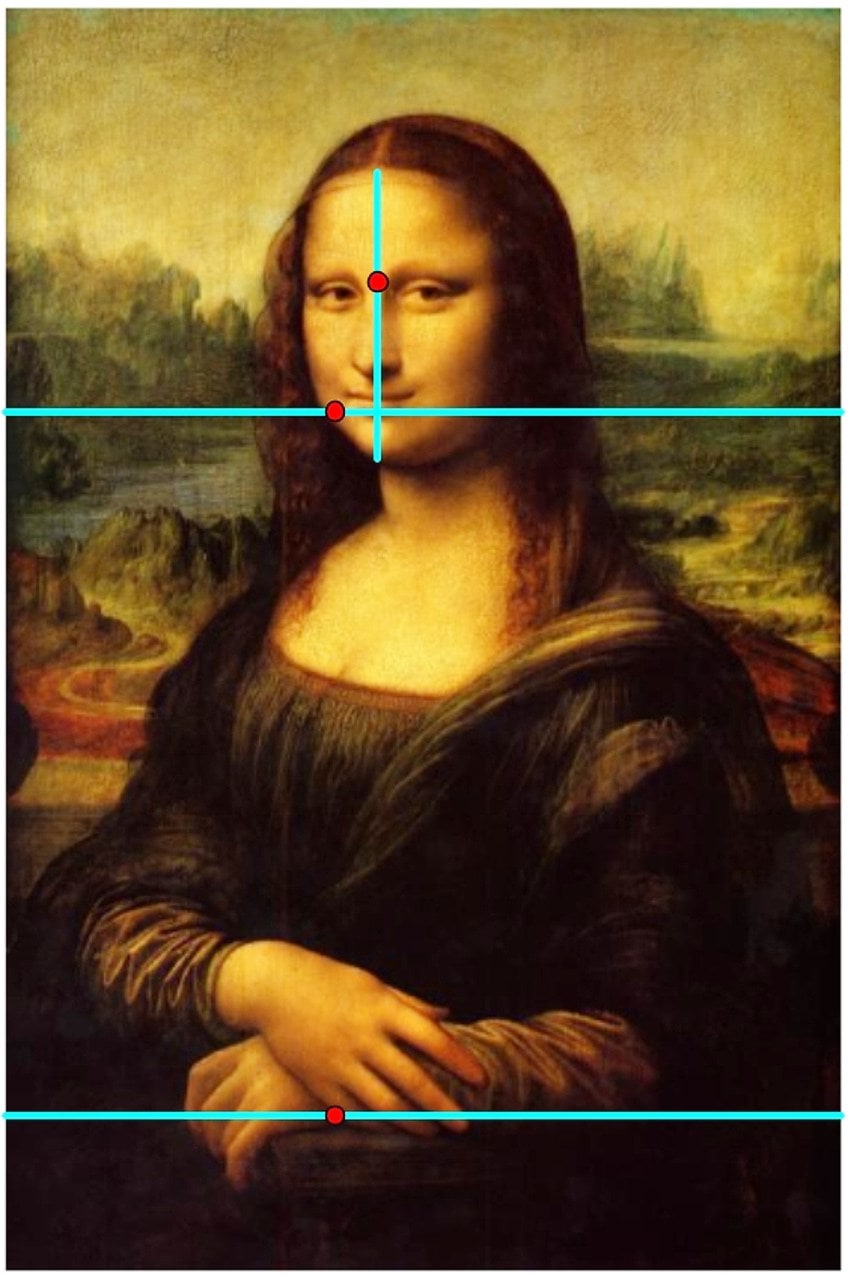
Shape and Form
The Mona Lisa painting appears mostly organic in its shape and form, which further heightens the naturalism. This is evident in the figure of Mona Lisa herself as well as the landscape behind her, which is a representation of nature portraying the natural curvatures created by the pathway and the water flow, as well as the sharp edges from the craggy terrain.
Space
Leonardo da Vinci utilized aerial or atmospheric perspective to give the illusion of depth and three-dimensional space. This was done by creating a hazy or blurred background, as we see in the distant mountains, compared to the foreground, which we see in the figure of the Mona Lisa, who appears clearer and in focus.
Furthermore, depth is created through scale. For example, the bridge to the right in the landscape, as well as the natural terrain in the background appear smaller in scale compared to the subject matter in the foreground.
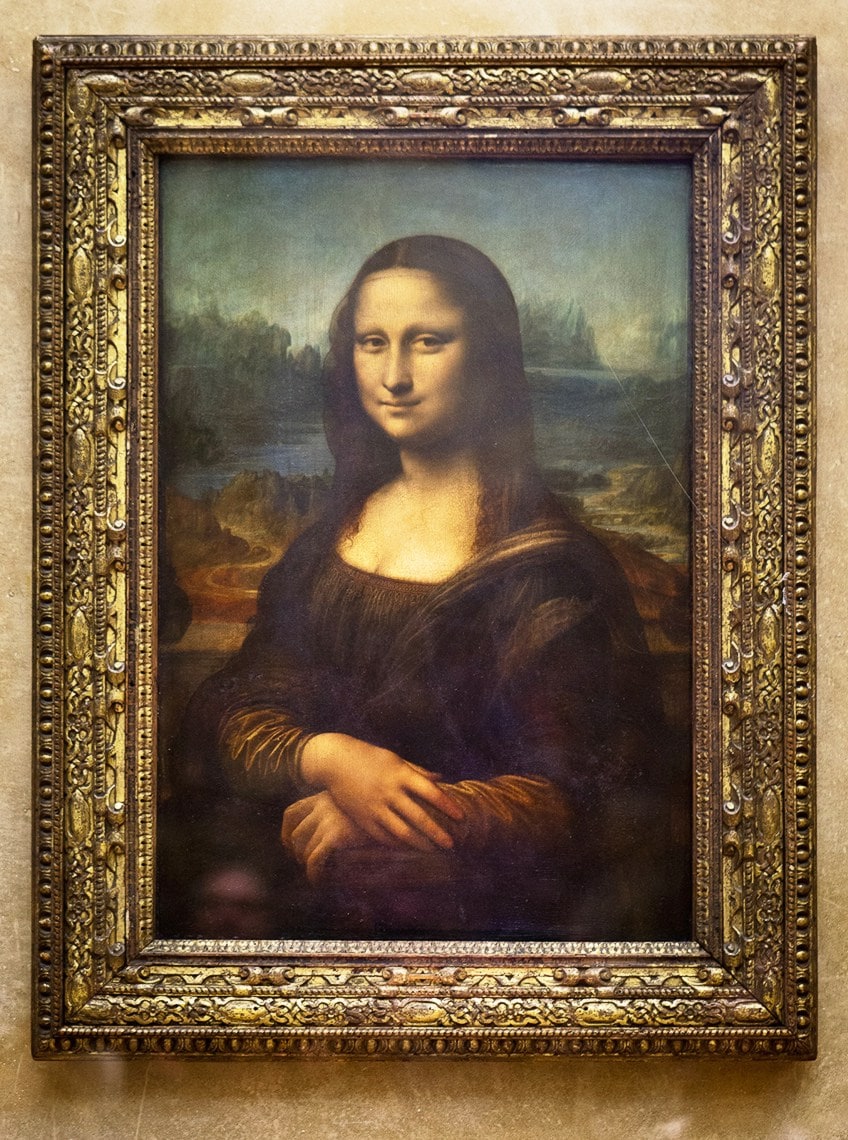
The Mona Lisa as an Objectified Icon
It is important to note that there is extensive research and conjecture around the Mona Lisa painting, from there being several copies, if the landscape is in fact real or fictional, to the identity of the sitter herself, some believe it was Salaì and others believe it could have been Leonardo da Vinci’s mother.
The Mona Lisa has become a “celebrity” among paintings, the object of many affections and outrages. While we have not covered all the facts, theories, and conspiracies about the Mona Lisa in this article, we have outlined a few of its important aspects and we encourage you to conduct deeper research about this famous portrait painting.
Leonardo da Vinci, who painted the “Mona Lisa”, created a timeless masterpiece that will undoubtedly raise eyebrows for even more centuries to come. In the words of Giorgio Vasari when he described this sitting beauty: “And in this work of Leonardo there was a smile so pleasing, that it was a thing more divine than human to behold, and it was held to be something marvelous, in that it was not other than alive.”
Take a look at our Mona Lisa painting webstory here!
Frequently Asked Questions
Why Is the Mona Lisa So Famous?
The Mona Lisa (c. 1503-1517) by Leonardo da Vinci has achieved a high level of fame for the mystery surrounding its inception, the subject matter, as well as its provenance. There are numerous theories surrounding it and many unanswered questions. One of the most mysterious qualities that make this painting so famous is the Mona Lisa’s smile.
How Much Is the Mona Lisa Worth?
The Mona Lisa (c. 1503-1517) is believed to be over $800 to $900 million in insurance value, which was estimated from 2021. In 1962, its insurance value was estimated at $100 million.
Who Was Mona Lisa?
The subject of the Mona Lisa (c. 1503-1517) was the Italian Lisa Gherardini, who later became Lisa del Giocondo. She was married to Francesco del Giocondo, who was a wealthy tradesman. Some believe the subject of the Mona Lisa could have been Isabella d’Este, but evidence suggests against the proposition.
Where Is the Mona Lisa Painting?
The Mona Lisa (c. 1503-1517) by Leonardo da Vinci is housed at the Louvre Museum in Paris, France. It was reportedly installed in the Louvre after the French Revolution; some sources suggest it during 1797 and others during 1804. Before then, it was reportedly first at the Palace of Fontainebleau and then at the Palace of Versailles.
When Was the Mona Lisa Painted?
Leonardo da Vinci, who painted the Mona Lisa, was believed to have started the oil painting from 1503 to around 1517. It was believed that he worked on the painting until before his death and that there was more than one copy of the painting, which he left for his assistant, whose name was Salaì.
Alicia du Plessis is a multidisciplinary writer. She completed her Bachelor of Arts degree, majoring in Art History and Classical Civilization, as well as two Honors, namely, in Art History and Education and Development, at the University of KwaZulu-Natal, South Africa. For her main Honors project in Art History, she explored perceptions of the San Bushmen’s identity and the concept of the “Other”. She has also looked at the use of photography in art and how it has been used to portray people’s lives.
Alicia’s other areas of interest in Art History include the process of writing about Art History and how to analyze paintings. Some of her favorite art movements include Impressionism and German Expressionism. She is yet to complete her Masters in Art History (she would like to do this abroad in Europe) having given it some time to first develop more professional experience with the interest to one day lecture it too.
Alicia has been working for artincontext.com since 2021 as an author and art history expert. She has specialized in painting analysis and is covering most of our painting analysis.
Learn more about Alicia du Plessis and the Art in Context Team.
Cite this Article
Alicia, du Plessis, ““Mona Lisa” by Leonardo da Vinci – Facts About the “Mona Lisa”.” Art in Context. August 31, 2022. URL: https://artincontext.org/mona-lisa-by-leonardo-da-vinci/
du Plessis, A. (2022, 31 August). “Mona Lisa” by Leonardo da Vinci – Facts About the “Mona Lisa”. Art in Context. https://artincontext.org/mona-lisa-by-leonardo-da-vinci/
du Plessis, Alicia. ““Mona Lisa” by Leonardo da Vinci – Facts About the “Mona Lisa”.” Art in Context, August 31, 2022. https://artincontext.org/mona-lisa-by-leonardo-da-vinci/.


